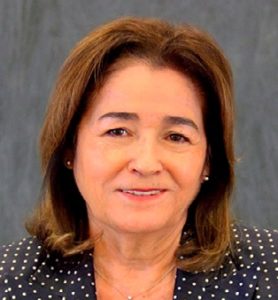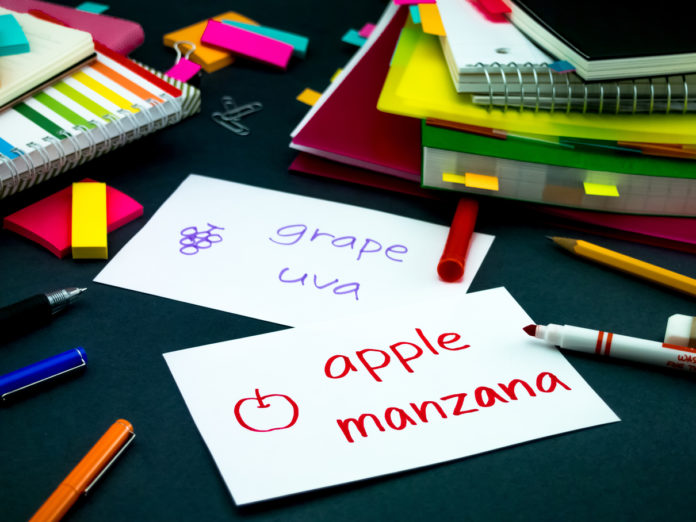Ron Ragsdale talks to Dr Josefina Villamil Tinajero
You were born in Mexico and came to Texas at the age of five with your family. What is your most vivid memory of your early days in school in America, and how has your school experience informed your practice as a teacher and teacher educator?
As a child, I was labelled LEP (Limited English Proficient). It all started when a note on my report card from my second-grade teacher to my parents read: “Josefina needs to express herself in class and when she is playing with the other children. The ‘U’ or unsatisfactory grade in reading is because of her language difficulty.”
I felt ashamed and humiliated, frustrated and at times even angry. Of course, I could read! There just weren’t any books in Spanish to prove it to my teacher and classmates.
My dad, who was college-educated in Mexico, gave us a wonderful gift—a tremendous sense of pride about our language, our culture and our history. Inside, I was dying to share all that knowledge with my teacher and classmates. But I wasn’t able to express my thoughts in English.
I don’t remember ever talking to my second-grade teacher and I hardly remember my classmates. Mine became a world of social isolation and distance—and that produced a great deal of anxiety.
But I was a pretty stubborn child! Instead of becoming bitter, I became even more determined to do well in school and to do something so that one day no child would suffer what I experienced.
For me, the turning point came in the 7th grade. Finally, I knew enough English to feel comfortable in doing academic tasks and I was a member of the Junior Honour Society. Later, I graduated as class valedictorian.
Because of this experience, improving educational opportunities for linguistically and culturally diverse students has become my mission. Developing instructional materials to meet their needs is my passion. And bilingual/ESL teachers are my heroes.
The possibility of implementing the very best programmes that can change the lives of children, particularly linguistically diverse children, is what inspired me to become a bilingual teacher and later a teacher of teachers.
Your particular area of interest is literacy. What drew your interest to literacy and what is the most important message you would give to teachers working with English language learners?
Going to school and not knowing how to read in English, but being a proficient reader in Spanish, was what drew my interest to literacy and bi-literacy.
My message to teachers working with ELLs is to establish a high-quality literacy environment to support their language, cognitive, and other developmental outcomes.
Part of building that high-quality learning environment includes using children’s L1, in addition to English. Although this is one of the most controversial issues in education of ELLs today, there is sufficient evidence that teaching children to read in their home language can support their literacy development in English, while at the same time helping them become bilingual and bi-literate.
"In the traditionally close-knit Latino family, the mother exerts a particularly powerful influence on her children."
There is ample research showing that bi-literacy and particularly dual-language programmes, help students become bilingual and bi-literate—something that is valuable linguistically, cognitively and eventually economically. Studies of 50-50 English-Spanish programmes have found that young children are able to develop English skills on par with their monolingual English-speaking peers, while also developing their Spanish skills.
So, provide literacy instruction in children’s home language (for at least 6 years, but preferably through high school) alongside English.
You champion a four-stage lesson model which you call: I do it, we do it, you do it together, then you do it alone. How exactly does that work?
I and my colleagues across the United States have authored, championed and integrated the four-stage model into our reading instructional materials to encourage independent learning. We refer to this as the Gradual Release of Responsibility. It provides teachers with an instructional framework for moving from teacher knowledge to student understanding and application in a way that ensures all students are supported as they acquire the skills and strategies necessary for success.
Students move back and forth between each of the components. This creates a student-driven environment where students get the instruction they need at the moment they need it. This is how it works:
I do it (Direct Instruction): The teacher explains and models to students what it is they are learning to do. The teacher provides direct instruction, models and conducts think-alouds. The students listen and ask for clarification.
We do it (Guided Instruction): The teacher and students work together and share the instruction. Students practice while the teacher provides interactive instruction, checks prompts, provides additional modelling and meets with need-based groups.
You do it together, I watch (Collaborative Learning): The students work in groups to produce something related to the topic, sharing their understanding before they apply it independently. The teacher observes, provides feedback, evaluates, determines their level of understanding and offers corrective feedback.
You do it (Independent Practice): Students apply what they learned to independent learning tasks assigned by the teacher, both in and outside of class. The teacher checks for understanding and to identify needs for re-teaching.
You are famous in Texas for creating the Mother-Daughter programme. What does that involve and why do you think working with parents is so important?
In June of 1986, I led a group of concerned educational professionals on the US/Mexico border, including participants from the University of Texas at El Paso (UTEP), the Ysleta Independent School District and the local YWCA. Together, we formed a coalition to address the widespread problem of high dropout rates among Latina females. This coalition created the El Paso Mother-Daughter (M/D) Program to provide academic intervention for 6th grade Latina girls at high risk of becoming school dropouts.
In the traditionally close-knit Latino family, the mother exerts a particularly powerful influence on her children. Thus, Latino mothers have the potential for influencing their daughters’ (and sons’) educational career choices. So, mothers are an integral part of the program.
The M/D Program began by initiating activities around four important developmental areas: Career Development, Academic Development, Community Life Development, and Personal Development.
For example, in the Activities for Career Development module, the girls participate in workshops entitled, ‘What Does It Take to Go to College?’ and, ‘What are My Interests and Abilities?’ Simultaneously, the mothers participate in workshops such as ‘What Can my Daughter Be When She Grows Up?’ or ‘What Are My Daughter’s Interests and Abilities?’
Academic Development activities include workshops for both mothers and daughters on time management and schoolwork. Mothers also have an opportunity to enrol in the General Education Development (GED) and receive their high school equivalency or take English classes at a local community college or university.
For the Community Development area, the girls plan and implement a community service project, while their mothers explore community resources that might be used for their own or their daughters’ further development.
The Personal Development topics bring the girls together to discuss topics such as family relationships, peer pressure and feeling better about themselves. Mothers participate in workshops such as, ‘How Can I Help My Daughter Feel Better About Herself?’
Essentially, the programme was designed to socialise the girls about planning their future careers, beginning with focusing on their academic and leadership skills. At the same time, mothers were familiarised with academic options. All of these activities also promote and improve communication and bonding between mothers and daughters.
Gender has frequently operated as a major barrier to educational completion in Latino communities, due to a wide variety of socioeconomic, cultural and attitudinal factors. At the same time, strong family relationships and maternal expectations are crucial in Latina girls’ academic success, especially in preventing dropouts.
There are six things that teachers need to remember when working with ELLs. They are derived from a set of Principles for Exemplary Teaching of ELLs that I developed along with two other authors on the McGraw-Hill Instructional Programmes (Wonders and Maravillas).
- Know your ELLs: Learn basic information about their families, language, cultures and educational backgrounds to engage them and to deliver lessons more effectively. Tap into ELLs prior knowledge and talents.
- Create Conditions for Language Learning: Create a classroom culture where students feel comfortable. Demonstrate an expectation of success for all learners and plan instruction which enhances and supports ELLs’ motivation for learning.
- Design High-Quality Lessons for Language: Plan meaningful lessons that promote language learning and help students develop learning strategies and critical thinking skills. Prepare lessons with clear language and content objectives and engage ELLs in the use of authentic language.
- Adapt Lesson Delivery as Needed: Observe and reflect on ELLs responses, to determine whether the students are reaching the learning objectives. Vary your oral language input, using L1 if possible, presenting visual aids and arranging peer support.
- Monitor and Assess Student Language Development: ELLs learn at different rates, so regularly monitor and assess ELLs language development to advance their learning efficiently. Gather data to measure student language growth, monitor students’ errors through frequent interaction and provide ongoing feedback.
- Engage and Collaborate within a Community of Practice: Collaborate with others to provide the best support for ELLs. Participate in continuous learning and developing leadership skills so you can be a resource to your school, as well as getting involved in designing and developing curricula.
REFERENCES
- Fisher, D., & Frey, N. (2013). Better learning through structured teaching: A framework for the gradual release of responsibility (2nd ed.). Alexandria, VA: ASCD.
- McVee, M., Ortlieb, D., Reichenberg J., and Pearson, P.D. (Eds) (2019). The Gradual Release of Responsibility in Literacy Resarch and Practice, Vol 10. Downloaded from https://books.emeraldinsight.com/page/detail/The-Gradual-Release-of-Responsibility-in-Literacy-Research-and-Practice/?=9781787694484
- Pearson, P.D. & Gallagher, M.C. (1983). The instruction of reading comprehension. Contemporary Educational Psychology, 8(3), 317-344. Doi:10.1016/0361-476X(83)90019-X

Dr Josefina Tinajero is currently a Professor of Bilingual Education and was previously Dean of the College of Education at the University of Texas at El Paso (UTEP). She serves as Director of the UTEP Mother-Daughter/Father-Son Program, and Chair of El Paso Do the Write Thing, a violence prevention program for middle schoolers. She is the current president of NABE—the National Association for Bilingual Education.





